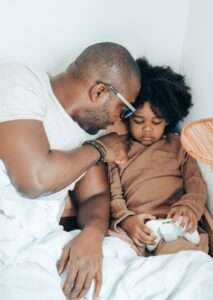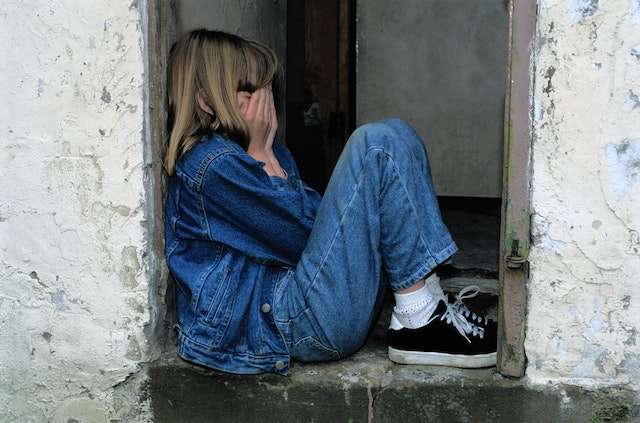Welcome to wikilifestyles.com
Introduction: All About Good Touch Bad Touch, Safe Touch Unsafe Touch
Today we can discuss all good touch bad touch, safe touch unsafe touch, actually this topic comes under the ‘Child Abuse‘ category since it needs some broader explanation we created a separate article.
Since it takes less than 3 minutes to read, we respectfully ask that you read the entire article, including the FAQ, without skipping a single sentence. You never know when one of the points could completely alter your life.
If you’ve ever watched YouTube videos, it’s likely that you’ve come across a “good touch, bad touch” video. Even if you are familiar with this idea, you should understand that it is incorrect and won’t help children develop healthy sexual relationships. Today, we’ll talk about this issue.
Children are typically trained in these ‘ good touch, bad touch’ videos that touching any part of the body that is covered by a swimming suit is bad and that only touching the rest of the body is acceptable. However, this is a false assumption because it won’t make it clear to the child what is acceptable and what is not.
The Fact :
First and foremost, we must recognize that its not possible to make a distinction between a good touch and a bad touch because studies show that family friends and close family members are the primary perpetrators of child abuse. As a result, an abuser who is this close to the child’s family won’t ever touch the child’s private areas because they must first build a trusting relationship with the child, which may take six to twelve months.
Do we need to teach the children to wait till the abuser touches the private parts of the body since an abuser need not intend to touch on private parts to make a nasty touch; it can be in any other parts of the body like the face, neck, palms, or legs that make the child uneasy or weird.

Safe Touch Unsafe Touch :
We should guide children on the difference between safe and unsafe touch. We naturally use our bodies to keep ourselves safe; for instance, if we are attacked, our bodies will automatically have a reflux action. Therefore, if someone makes us feel unsafe, our bodies will automatically give us signals. What we should instruct children on is how to respond to these signals.
Therefore, we must teach children to trust their bodies’ instincts, gut emotions, or body signals. They must also quickly warn us of any behavior that transmits the wrong body signals.
And it’s not just touch :
it can be anything that puts a child at risk such as staring, sitting next to him or her without touching them, showing a pornographic video, or displaying abuser’s body parts. If we could teach them about unsafe behavior, that would have a greater impact than merely describing about touch.

Conclusion: All About Good Touch Bad Touch , Safe Touch Unsafe Touch
Finally, teaching children the difference between good and bad touch is critical in preventing child abuse. It is critical for parents and carers to teach their children the difference between safe and unsafe touch and to empower them to speak up if they ever feel uncomfortable. We can protect our children from the devastating effects of abuse by encouraging open communication and creating a safe environment. Remember that prevention is essential, and it begins with educating our children about their bodies and their rights. Let us all work together to keep every child safe and protected from harm.
Please share this article to your loved ones and comment your opinion on below shown box
FAQ :
Ques 1 . What are the factors that may be contributing to the possible child abuse?
The likelihood of child abuse can be affected by a number of factors, including:
A Parental stress: Abuse is more likely to occur when parents are under a lot of stress.
B Abuse of substances: Abuse of substances can skew judgement and raise the possibility of abuse.
C Mental health issues: Issues with the mind, such depression, can make abuse more likely.
D Abuse in the past: People who have experienced abuse in the past are more prone to abuse their own children.
E Lack of family and friend support can raise the likelihood of abuse due to social isolation.
F Financial strain: Having financial problems can make a family more stressed out and make abuse more likely.
G Family violence: The likelihood of child maltreatment can increase if there has been family violence in the past.
H Lack of understanding of how children develop: Abuse-related behaviors can be caused by a lack of information about how children develop and the proper methods of punishment.
It’s important to remember that these are simply risk factors and that not everyone in these circumstances will harm their children.
Ques : 2 what is the difference between child abuse ,child assault ,child maltreatment, child neglect ?
Harmful acts committed against children are referred to by several names, including child abuse, child assault, child maltreatment, and child neglect. However, they make reference to particular forms of abuse:
Any intentional damage or mistreatment of a kid is considered child abuse. This encompasses abuse of the body, of the sex, of the emotions, and of the mind.
A . Child assault is a form of physical abuse that involves purposefully hurting or harming a child.
B . Child maltreatment: The phrase “child maltreatment” refers to all types of child abuse and neglect. It can involve neglect as well as physical, sexual, emotional, and psychological abuse.
C . Child neglect is the inability of a caregiver to meet a child’s fundamental requirements, including those for food, shelter, clothes, and medical attention. Failure to offer emotional and/or educational assistance is another definition of neglect.
In conclusion, child abuse refers to any type of harmed or mistreated behavior toward a kid, whereas child assault is a particular form of physical abuse, child maltreatment refers to all types of abuse and neglect, and child neglect is the inability to meet a child’s basic needs.
Ques : 3 What are the long term effects of being mistreated as a child?
An individual’s physical, emotional, and mental health may be negatively impacted for a long time if they were mistreated as children. These impacts include, among others:
A . poor self-image and low self-esteem
B .challenge in establishing and sustaining healthy relationships
C . Depression, anxiety, and post-traumatic stress disorder are all more likely (PTSD)
D . Addiction to drugs and alcohol
E. increased chance of developing physical health issues like heart disease and physical discomfort
F . Problems with connection and confidence in others
It’s important to remember that every person experiences childhood trauma in a unique way, and the consequences might differ in intensity and duration. Many people who were mistreated as children can recover and move past their experiences with the right care and support.
Ques : 4 How can we stop abuse?
A multimodal strategy is necessary to prevent abuse, including:
A . Education and awareness-raising activities can help stop abuse by making individuals more aware of the types and consequences of abuse as well as by teaching them positive interpersonal and communication techniques.
B . Assistance for survivors: Giving abuse victims support and services like hotlines, shelters, and therapy can help them take back control of their lives and stop more abuse from happening.
C . Liability of abusers: Laws and regulations that hold abusers responsible for their conduct, as well as their enforcement, can serve as a deterrent to abuse and protect victims.
D . Making safe spaces: You may stop abuse from happening by encouraging people and groups to make friendly spaces free from harassment, abuse, and discrimination.
E . Addressing the underlying social, cultural, and economic reasons of abuse, such as poverty, gender inequality, and cultural norms that support violence, can help lessen its prevalence in society.
Ques: 5 Why is it important to prevent abuse?
Abuse prevention is crucial for a number of reasons:
A . Protecting human dignity and rights: Abuse breaches a person’s fundamental rights and dignity, making it imperative to stop such violations in order to guarantee that everyone is treated with respect and dignity.
B . Improving physical and mental health: Physical injuries, chronic pain, anxiety, depression, and post-traumatic stress disorder are just a few of the serious physical and mental health effects that abuse can have (PTSD). Abuse can be avoided, which can benefit survivors’ and their families’ health.
C . Building a strong communities: Fear, suspicion, and a lack of safety are frequently present in areas where abuse is common. Abuse prevention can contribute to stronger, safer, and more unified communities.
D . promoting equality: Victims of abuse are frequently members of vulnerable and marginalized groups, including women, children, and people from minority groups. Preventing abuse contributes to equality and ensures that everyone has equal access to resources and opportunities.
E . saving money: The expense of legal and social assistance for survivors, as well as the cost of healing the physical and mental health effects of abuse, can be high. Abuse prevention can help lower these expenses and free up resources for other crucial goals.
Ques : 6 How can we break the cycle of abuse as an abuser?
In order to end the cycle of abuse, both private and public efforts are needed, such as:
A . Recognizing and treating abusive behaviors: Those who have abused others must own their wrongdoing, accept responsibility, and seek assistance to alter their abusive patterns.
B . Support and treatment: Victims of abuse should look for assistance from dependable friends, family members, or specialized groups. In order to rehabilitate and restore control over their lives, they may also profit from therapy and other types of treatment.
C . Addressing cultural norms and attitudes that support abuse, such as the acceptance of violence or the belief in gender inequity, can help break the cycle of abuse and stop it from occurring in the first place.
D . Providing education and resources to assist individuals in identifying and responding to abuse can help empower individuals and communities to prevent and stop abuse.
E . Creating safe and supportive communities that foster healthy relationships, open communication, and a zero-tolerance policy for abuse can help prevent abuse and provide a supportive environment for survivors to heal.
Breaking the cycle of abuse is a difficult and ongoing process, but by taking these steps, individuals and communities can work toward an child abuse-free future.

1 thought on “All About Good Touch Bad Touch , Safe Touch Unsafe Touch”